Los Angeles, CA Pollen and Allergy Report for Summer 2023
Pollen Allergy Trends in Los Angeles, CA
When is pollen lowest in Los Angeles, CA?

February
Lowest month total PPM
Avg. PPM
When is pollen highest in Los Angeles, CA?

March
Highest month total PPM
Avg. PPM
How does pollen in Los Angeles, CA compare to California?
Los Angeles has a higher average PPM than the state of California.
Los Angeles yearly avg PPM:
California yearly avg PPM:
How does pollen in Los Angeles, CA compare to the USA?
Los Angeles has a lower average PPM than the USA.
Los Angeles yearly avg PPM:
USA yearly avg PPM:
Is pollen worse this year in Los Angeles, CA?
Spring 2023 was better than spring 2022.
Spring 2023 PPM:
Spring 2022 PPM:
Average PPM in Los Angeles, CA
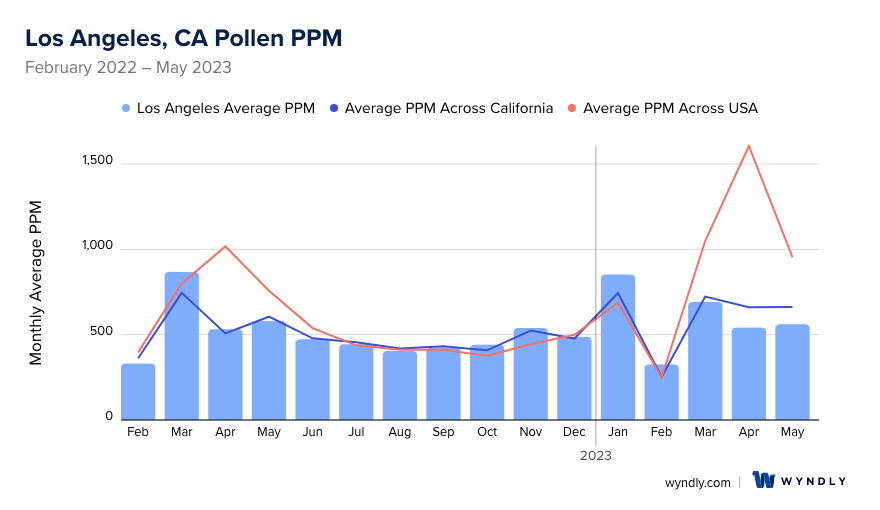
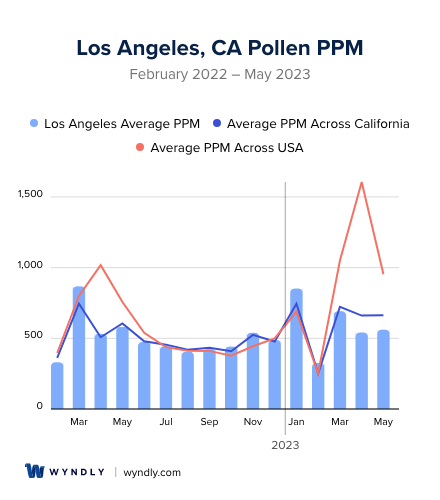
Los Angeles, CA Pollen and Allergy Breakdown by Month
Grass
When is grass pollen highest in Los Angeles, CA?
May has the highest grass pollen in Los Angeles, CA with an average PPM of
When is grass pollen lowest in Los Angeles, CA?
December has the lowest grass pollen in Los Angeles, CA with an average PPM of
Tree
When is tree pollen highest in Los Angeles, CA?
March has the highest tree pollen in Los Angeles, CA with an average PPM of
When is tree pollen lowest in Los Angeles, CA?
August has the lowest tree pollen in Los Angeles, CA with an average PPM of
Weed
When is weed pollen highest in Los Angeles, CA?
November has the highest weed pollen in Los Angeles, CA with an average PPM of
When is weed pollen lowest in Los Angeles, CA?
February has the lowest weed pollen in Los Angeles, CA with an average PPM of
Los Angeles, CA Pollen Monthly Breakdown by Pollen Type
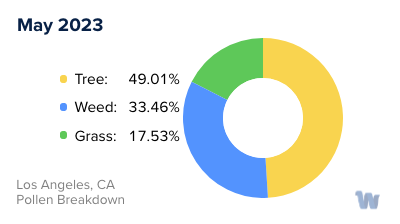
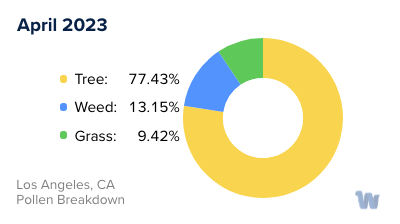
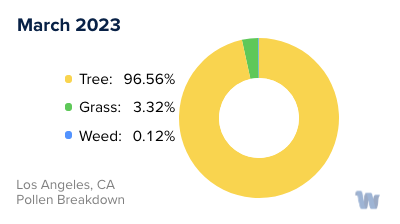
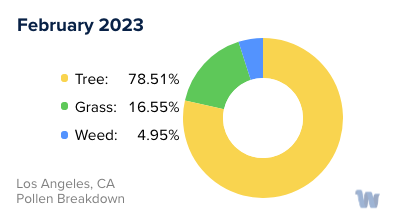
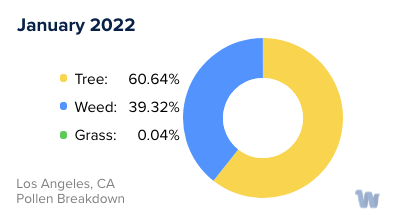
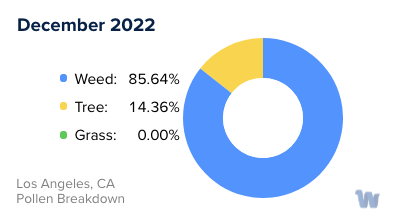
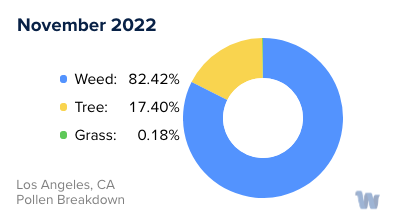
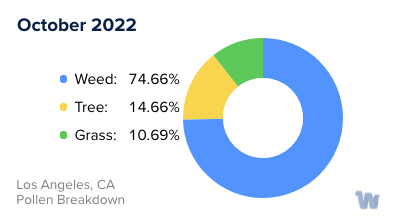
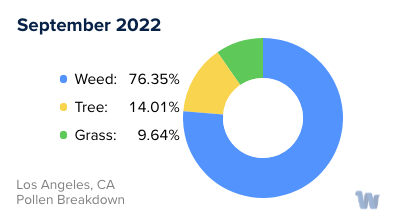
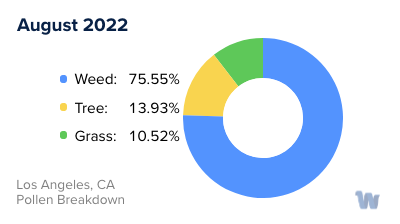
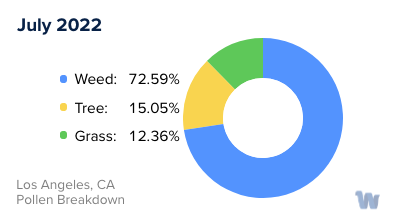
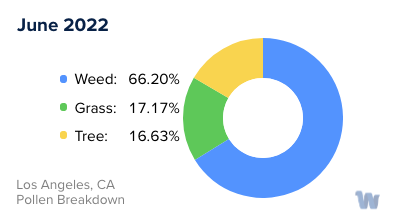
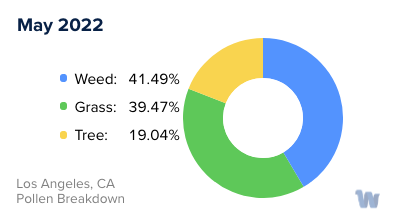
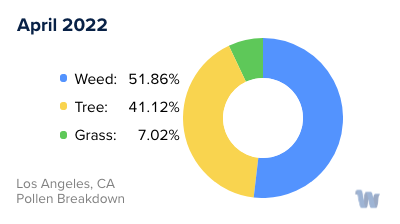
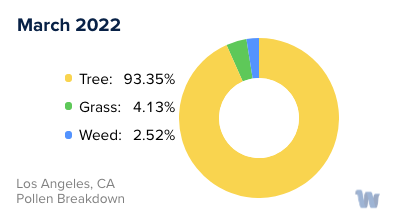
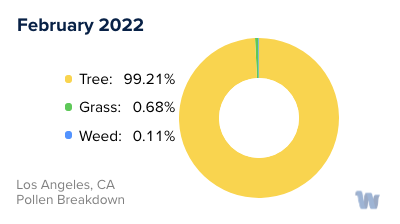
Pollen and Hay Fever in Los Angeles, CA
In Los Angeles, California, the allure of warm weather and coastal breezes is tempered by the reality of pollen allergies for many residents. Despite its coastal climate, which generally results in lower pollen counts than other states with similar weather, there's no shortage of seasonal allergies in the city of angels. In fact, these allergies are primarily triggered by pollen from grasses, trees, and weeds.
Understanding the rhythm of allergy seasons in Los Angeles can be helpful. The city's milder winter means that allergy season starts earlier than in many other places, often kicking off in late January. However, thanks to California's climate, the season can be somewhat less intense for allergy sufferers.
Pollen allergies in the city have their own seasonal cadence. Spring allergies are usually a result of tree pollen, while grass pollen is the main culprit in the summer. Come fall, pollen from weeds tends to dominate the allergy landscape.
There are certain times of the year when pollen counts peak, and those with seasonal allergies may want to take extra precautions. In Los Angeles, April, May, and September are typically the months when seasonal allergies are at their peak. It's during these months that pollen counts are high, especially during the day.
By late October or November, the allergy season usually comes to an end, giving residents a break from their seasonal allergies. However, it's worth noting that indoor allergens can still cause issues for many, even when outdoor allergens are less of a concern.
Los Angeles is home to a variety of plants that can contribute to pollen allergies. Among the most common allergens are several types of grass, including Bermuda grass, Bent grass, Timothy grass, Orchard grass, and Bluegrass. Other culprits include weeds like Ragweed, Saltbush, Russian thistle, and Sagebrush. Certain trees, such as Cypress, Willow, Oak, Maple, Walnut, and Ash, also contribute to the pollen count in the city.
Although allergies can be a bother, understanding the types of pollen and their seasons can help residents navigate life in Los Angeles more comfortably, even during peak allergy season.


